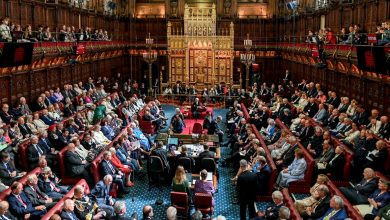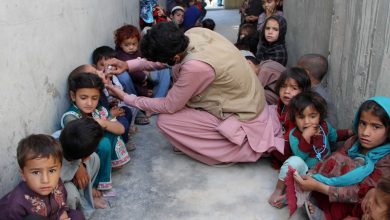Colonialism and apartheid stripped black South Africans of land and labour rights – the effects are still felt today

مجلة المذنب نت متابعات عالمية:
Land dispossession among South Africa’s majority black population remains a thorny issue 30 years into democracy. Labour law scholar Marthinus van Staden’s new research examines the historical relationship between land dispossession and labour control in South Africa. It explores how the systematic seizure of indigenous people’s land during colonisation and apartheid reduced them from landowners to labourers, under exploitative conditions, and how the effects continue to linger. We asked him to explain.
What is the history of land dispossession and labour control in South Africa?
The history spans several centuries, beginning with Dutch colonisation in the mid-17th century. It intensified under British rule from the late 18th century. Early colonial policies were inconsistent, but gradually evolved into more systematic land grabs and labour regulations.
The discovery of minerals – primarily gold and diamonds – in the 1880s heightened the demand for cheap black labour.
The 19th century saw other significant developments, including the abolition of slavery and the introduction of pass laws. Pass laws required black people to carry identity documents that restricted their movement, employment and settlement.
The 1913 Natives Land Act severely restricted black land ownership. It prevented black people from owning or renting land in 93% of South Africa, which was reserved for white ownership. Many black farmers who had previously owned or rented land in what had been designated “white areas” were forced to become labourers on white-owned farms. Or they had to move to “reserves” the state had set aside.
This was followed by a series of laws implementing urban segregation and expanding “native reserves”.
The apartheid era of formalised racial segregation, from 1948 to 1994, saw the most extreme measures of land dispossession and labour control. The creation of the homeland system relegated black South Africans to 10 economically unviable areas, along ethnic lines. Black people in homelands were mostly forced to work in “white” South Africa, where they lacked legal rights as workers.
It wasn’t until 1979 that black trade unions were allowed to register. This allowed them to operate openly and bargain with employers and the government for improved wages and working conditions.
Trade unions served as important political actors. They increased black workers’ political voice and influence. In fact, all labour legislation before 1981 had the distinguishing feature of excluding black workers from its ambit of protection.
Only after apartheid ended in 1994 did efforts begin to address the legacy of land dispossession and unfair labour practices through restitution and reforms. Land reform processes have been criticised for being ineffectual.
What effect did dispossession have?
Dispossession created a large pool of cheap labour for white-owned farms and industries. Without access to land for subsistence or commercial farming, black South Africans had little choice but to work for low wages in the capitalist economy. The employment contract, transplanted from colonial law, became a tool for exerting control over these workers. It reinforced their subordinate status.
The common law contract of employment, with its inherent element of employer control, was applied to the formerly independent indigenous people now forced into wage labour.
The homelands ensured a continuous supply of cheap black migrant labour. This system of land deprivation and labour control not only served the economic interests of the white minority. It also reinforced racial hierarchies.
The socio-economic consequences continue. Black workers are still more likely to be unemployed – or in precarious work – than whites.
Why does this matter today?
The legacy of land dispossession and labour control continues to shape South Africa’s social, economic and political landscape. It’s a critical consideration in efforts to build a more just and equitable society.
This history has created deep-rooted economic disparities. The concentration of land ownership and wealth in the hands of the white minority remains largely intact, perpetuating socio-economic inequality.
The ongoing struggle for land restitution and reform is directly linked to this history. Addressing the legacy of dispossession is crucial for economic justice and social stability.
Understanding this history is essential for developing effective policies to address poverty, unemployment and uneven development.
It is also vital for national reconciliation and building a more equitable society. It underpins current debates about social justice, reparations and the transformation of economic structures.
Which practical, remedial policies must be carried out?
The historical link between land loss and subjugation by means of the controls inherent to the contract of employment makes land reform a necessary first step to reversing this process.
The government has put in place formal mechanisms to halt racialised land ownership. However, land restitution and reform programmes need to be enhanced and accelerated.
They should include restoring land rights where possible, and providing support for sustainable land use. This would address both the economic and emotional aspects of historical dispossession.
Legislation such as the Labour Relations Act and the Employment Equity Act have done much to strengthen protections for workers’ rights, particularly for those in precarious employment situations. However, the ways in which these laws continue to endorse a global north conception of the employment relationship, which emphasises control, must be rethought.
They must be reformed to promote equality, dignity and fair labour practices.
Reforms should involve more collaborative models and addressing the socio-economic impacts to redress historical injustices.
Targeted economic development initiatives are needed in historically disadvantaged areas, including former homelands. These could include infrastructure development, skills training programmes, and support for small businesses to create economic opportunities.
These remedial policies should be part of an all-encompassing strategy to address historical injustices, and create a more equitable South African society.
نشكركم على قراءة المنشور عبر مجلة المذنب نت, المتخصصة في التداول والعملات الرقمية والمشفرة















